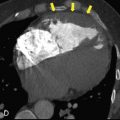The level of performance declines, the cost of maintenance increases, and regulatory demands change. That is when technology upgrading is not a decision but a need. However, purchasing a new device or a program out of the blue may cost money, interfere with work, and even leave compliance under threat.
This article takes a step-by-step approach to outline the necessary considerations that every laboratory must make before deciding to proceed with a laboratory technology upgrade.

Why Labs Hit a Breaking Point When Old Tech Holds Them Back
At this stage of breaking point, a great number of laboratories begin to consider the proven suppliers such as IKA. A global company of laboratory equipment, to determine the effects of improved instruments on the performance. Old technology may prove to be a bottleneck due to the following reasons:
- A decrease in throughput and reliability
- Rising maintenance costs
- Lack of compliance with modern standards
When all these come together, the performance, profitability, and credibility of the lab are compromised. Early identification of this breaking point provides greater control over the upgrade schedule, budget, and training plan.
Spotting the Signs It’s Time to Upgrade
Delaying the breakdown until equipment actually fails results in panic buying and implementations. Rather, be aware of the following early warning signs;
- Often, it breaks down or runs out of calibration
- Slower turnaround times.
- Data bottlenecks
- Security gaps
By monitoring these values, you have the hard numbers to present a case to the stakeholders to upgrade; these include the downtime hours, maintenance, and re-test rates. Speaking to a reputable laboratory supplier, such as IKA, can also assist in the decision-making process.
Asking the Right Questions Before You Buy
After making this decision to get a laboratory technology upgrade, avoid being drawn by features. A set of questions will check the vendors and products:
- What is the problem that we are solving? Before shopping, define your performance objectives, whether you want to be fast, more accurate, meet regulations, and so on.
- Fit to workflow? How can the product fit our workflow? Request demos with your sample data types & formats.
- How expensive will the overall ownership cost be?
- How long will support last? Know the years the vendor has been providing a service and updating it.
A formal requirements document ensures that all people are on the same page and scope creep is avoided in the procurement process.
Compatibility: The Overlooked Risk Factor
Probably the most usual yet costliest shock during lab equipment modernization is the discovery that the new tool or programme does not cooperate with existing systems. Even non-glaring incompatibilities lead to hidden costs:
- Data transfer headaches. In case format differences are not available, middleware or manual transcription might be required, implying a chance of error.
- Network and security issues. Hardware traditions might differ from the new equipment in terms of authentication.
- Space and utilities (physical). The new apparatus would require more power, air conditioning, or bench area.
Carry out a compatibility audit prior to buying. Mapping Instruments, software, and infrastructure that you have. Early involvement of your IT specialists to verify the transfer of sample data and IT security mechanisms. The aim is to ensure the integration without affecting the workflow.

Staying Safe and Meeting Compliance Without Extra Hassle
Regulatory compliance, be it the ISO, CLIA, GLP, or FDA, almost dictates every procedure related to labs. The arrival of new technology is not supposed to add to or complicate your compliance. Key points to review:
- Automated recordkeeping. Is the system automated in logging the calibrations, operator identities, and audit trails?
- Validation support. Is the vendor to offer installation qualification (IQ) and performance qualification (PQ), and operational qualification (OQ)?
- Data security. Added encryption, access controls, and backup should be up to date.
- Regulatory alignment. Inquire where the vendor monitors the changing requirements and makes updates to the software.
A decision made out of a compliance-based solution would save hundreds of hours of manual documentation, and it would minimize the chances of audit findings.
Training Teams So the Investment Pays Off
The most developed system can only perform poorly when personnel are not aware of its usage. 58% of employees are seeking further development outside of their formal training. You should have training included in your budget and schedule where you are going at the first day. Consider:
- Role-specific modules
- Hands-on sessions
- Guides to documentation
- Ongoing support
Also, highly trained teams can be faster to adopt, besides saving time and making fewer mistakes, re-rules, and frustration, optimizing the lab tech investment.
Thinking Five Years Ahead, Not Just One
Lab equipment modernization can be costly. You should stretch your investment, consider it in the long term:
- Scalability. Can the system endure installation double the transport you have?
- Modularity. Select platforms where it is possible to add-on functionality instead of replacing them fully.
- Vendor roadmap. Inquire about the future updates, integrations, and why they plan to retire.
- Data longevity. Make sure that the file formats and the storage means are fine in five or ten years down the line.
Construction of a five-year roadmap of technology also prevents incidences of recurrence and costly storytelling in budgetary and executive approval.
Final Thoughts
The breaking point of labs is observed when systems deteriorate towards old age and end up creating problems in productivity, quality, or compliance. Risk is reduced by spotting early warning signs, posing difficult questions to vendors, and conducting compatibility audits. Exploring the business case of compliance features, investing in training, and doing long-term planning transforms the cost into a plural principal benefit. Under proper planning, your next technology upgrade would help improve efficiency.
Stay updated, free articles. Join our Telegram channel

Full access? Get Clinical Tree








